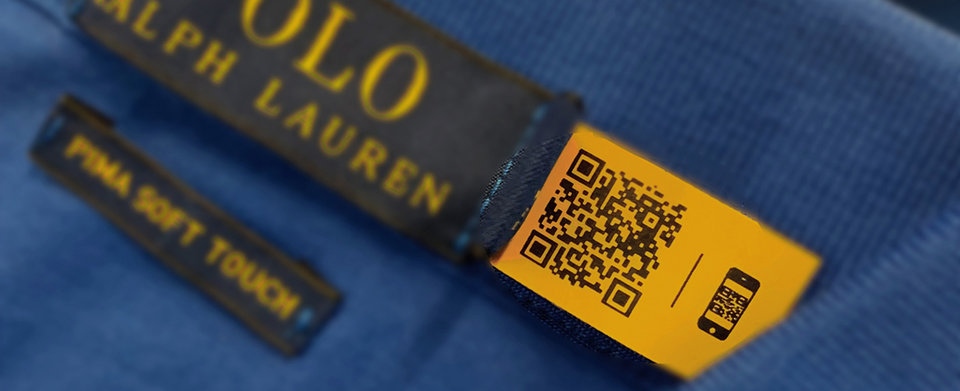Mark Burstein, president at NGC Software, which provides supply chain and PLM solutions to the apparel sector, says Industry 4.0 would help pull the apparel sector away from siloed PLM solutions and isolated assessments of supply chain management.
“This is where most of the fashion industry is today,” he explains, adding that Industry 4.0 can provide “a giant leap in productivity” by providing a single, connected platform for all supply chain processes.
Pete Santora, chief commercial officer at SoftWear Automation, which creates autonomous sewn goods production lines using robotic solutions, agrees, noting that Industry 4.0 is about “the interconnectivity of disparate islands of machines to form a chain of information and cooperation.”
He emphasises the importance of artificial intelligence solutions and the use of robotics, machine vision, machine learning, natural language processing and big data analysis “to become a more efficient and productive method of production.”
“Industry 4.0 can provide a giant leap in productivity by providing a single, connected platform for all supply chain processes.”
Suppliers and buyers are increasingly aware of these opportunities – witness the growing range of digital solutions now available to allow clothing manufacturers to embrace Industry 4.0.
Keith Fenner, managing director of Coats Digital, says collaborative cloud-based platforms have the potential to allow brands to interact with supply chain partners, such as sourcing hubs and manufacturers, with efficiency and better visibility.
As an example, he points to Coats Digital’s FastReactPlan, which is designed to bring together capacity, critical path and materials into a single, integrated IT management system. “This allows effective master planning across multiple factories, as well as the detailed and accurate scheduling of manufacturing lines and machines,” he told just-style magazine.
It enables data to be shared across different arms of a brand’s operations, such as headquarters, sourcing hubs and manufacturers, and also within individual departments.
“Sharing key data reduces data entry workload, improves accuracy and speeds up the planning process and response times,” Fenner says.
He adds that by integrating data across the entire supply chain, in real time, “delivery lead times can be significantly reduced and freight and inventory management optimised.”
Digital connections
US-based PTC also provides a suite of software technologies designed to help clothing manufacturers digitally connect their operations.
Brion Carroll, PTC’s vice-president, global business development, retail business unit, points to the company’s FlexPLM, ThingWorx, and Vuforia products. He explains that FlexPLM provides data on what is required to produce each garment, detailing the bill of materials (BOM) and labour operations (BOL).
“ThingWorx provides the unique ability to deliver critical information to a range of diverse machinery, in sync with its operational execution, with production then further enhanced through using Vuforia, an instructional support technology for operators at each discrete step in the manufacturing process.”
“The single biggest impact this technology enables is the shift in business models from design/make/ship/sell, to design/sell/make/ship” - Edward Hollyday, Black Swan Textiles
Edward Hollyday, vice president of Black Swan Textiles, a digital consultancy for the apparel industry, adds that because Industry 4.0 helps brands speed up the whole production process, they can deliver on-demand manufacturing. “The single biggest impact this technology enables is the shift in business models from design/make/ship/sell, to design/sell/make/ship,”he explains.
But he stresses that this requires a fundamental change in approach to product planning. “For a brand, this means shifting from seasonal line planning to an open-to-buy model,” he says, adding that this eliminates product and manufacturing capacity forecasting as a risk to the brand.

Ralph Lauren Corp is rolling out Digital Product Identities (IDs) for tens of millions of products
Personalisation and customisation
Santora says brands should also aim to move away from global supply chains to more localised production, especially as they look to meet growing demand for personalisation and customisation.
“Personalised clothing made only after the order provides the holy grail for both brand and customer,” he explains, adding that Industry 4.0 decreases the cost of localised manufacturing while increasing its quality, speed and capabilities, such as meeting orders for garments in three days or less.
Transparency
Craig Crawford, an IT strategist with 30 years’ experience in global fashion brands, adds that Industry 4.0 technology can also help brands get closer to the consumer by providing more information about each product.
As an example, he points to a new initiative from Ralph Lauren, which has partnered with the real-time internet of things Software as a Service (SaaS) platform Evrythng and apparel label specialist Avery Dennison to install digital product IDs into product labels to help tackle counterfeiting of its brand.
Consumers can check if an item is authentic by scanning a product label with their smartphone, and then find out more about the product at the same time.
Crawford says this type of transparency is the next logical step for brands who are utilising Industry 4.0 technologies.
He explains that digital product labels like those used by Ralph Lauren can link to an individual website for each product, telling the consumer “whatever the brand wants them to know. So, it could be how that product was made, or who made it.” As a result, brands can help ease concerns about ethical and environmental issues, he says.
Headline image: Artificial intelligence, machine learning, big data, automation and 'batches of one' are all weaving their way into the textile and clothing industry
BACK TO TOP